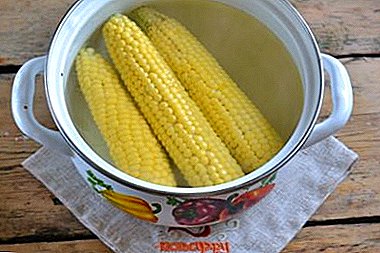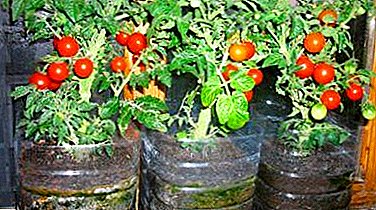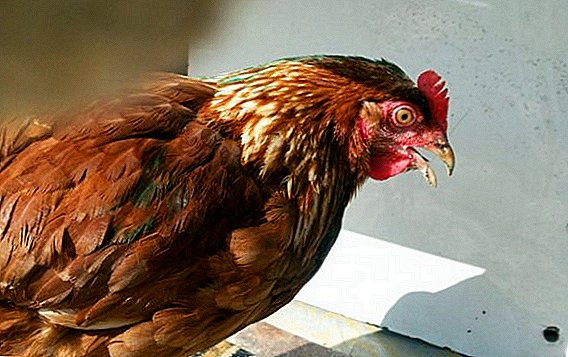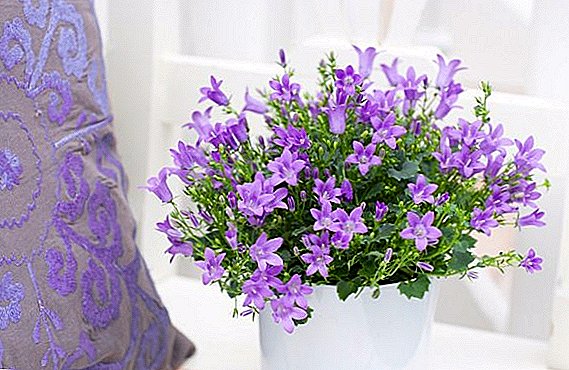 Campanula is a plant that is found in the wild nature of southern Europe, but many species of Campanula have been cultivated and are currently used by growers as ornamental plants. Campanula is a one-year-old and a perennialThere are many varieties of sizes, shapes and colors of these colors.
Campanula is a plant that is found in the wild nature of southern Europe, but many species of Campanula have been cultivated and are currently used by growers as ornamental plants. Campanula is a one-year-old and a perennialThere are many varieties of sizes, shapes and colors of these colors.
But at home, only ravnolistnaya Campanula takes root.
What conditions are needed for growing campanula in the house
When you purchase the flower Campanula, pay attention to whether there are new sprouts next to it, whether pests and dry leaves are missing.
Did you know? This flower is popularly known as the "bride and groom". The plant has such an unusual name because its flowers are white or blue.When she campanula in the transporting pot has adapted to the environment in the apartment or house, she needs a transplant, because after the purchase she is in a transported substrate.
About transplanting Campanula you learn by reading the article. These tips will help to further grow a healthy and beautiful flower.

Location and lighting
Campanula loves a diffused bright light. Flower is better protected from sunlight. It will feel great if it is placed on the west or east window.
When placed in the southern part of the house, the campanulu must be pritened. If you notice that the leaves of the campanules curl and fade, then most likely this is due to excess sun. If it receives less light, the shoots become elongated, the leaves are at a distance more than usual, and the flower loses its former appearance.
When there is no way out, and the campanula home needs to be placed on the north window, then it is necessary to organize additional lighting at least up to two hours a day. 
Temperature
The flower will be comfortable at temperatures up to 22 ° C, but it is better if the temperature is not above 18 ° C. In winter, the campanula should be kept at an average temperature of about 13 ° C.
How to care at home
Campanula is a very delicate plant, but quite unpretentious, so you need to devote a little time and attention to caring for the plant at home, and you will be able to grow an incredibly beautiful flower.
Important! Campanula is very sensitive to water quality. It is desirable to carry out watering with settled water; if watered with hard water, the plant will die over time.
Watering mode
In the hot summer, the campanula needs frequent and abundant watering, it is necessary to ensure that the soil is constantly wet, but to avoid long stagnation of water.
Sometimes you have to water the plant every day, because in the summer the ground dries quickly. In the autumn and winter, watering is significantly reduced, the plant needs to be watered no more than once a week. 
Air humidity
When air humidity the room is low; the campanula, when properly grown, must often be sprayed with lukewarm water. Especially you need to pay attention to spraying in summer and winter, when the heating is turned on, and the plant is on the windowsill.
Top dressing of a flower
Do not forget about dressing. Like any other indoor plant, campanula needs additional feeding.
It is worth doing in the period of growth and flowering - in spring and summer. Campanula home will feel great and will delight you with flowering, if you feed it with a special fertilizer for flowering ornamental plants twice a month.
Diseases and pests
Campanula can be affected by diseases and pests. Dangerous for this plant are scale and spider mite. The flower should be inspected periodically, and if you managed to notice moving black dots under the leaves, then, most likely, this is a spider mite.
White or brownish spots on plants may indicate the presence of scythos.
An indicator of the presence of pests can be the appearance of yellow, wilted leaves, and further their loss.
It will be interesting for you to learn about the diseases and pests of petunia flowers, Decembrist flower, gatsania, peonies, lilies, irises, violets, cannes, geraniums, anthurium.When detecting pests, Campanula must be treated with an insecticide, for example:
- Actellic is a drug that acts on the scutellum and spider mite. Dilute the ampoule with 2 ml of the preparation in 100 ml of water, then add a liter of pure water, mix well; spray the plant, evenly wetting the leaves and shoots; It is recommended to use gloves outdoors or a balcony.
- "Fitoverm" - against spider mite. Used 2 ml per 1 liter of water. Stir the drug first in 100 ml of water, then add 1 l. Spray the plant 2 times / day with an interval of 10 days before the disappearance of pests. Non-toxic.
 Also, Campanula is subject to gray rot, which can occur with very frequent and abundant watering, water stagnation and consistently high humidity.
Also, Campanula is subject to gray rot, which can occur with very frequent and abundant watering, water stagnation and consistently high humidity.Therefore, it is necessary to follow this: paying attention that it began to wither, the stem and root began to rot, an unpleasant smell of rotting appeared, it is necessary to urgently save the plant, otherwise it will die.
It is necessary to remove all the old land, the rotten parts of the flower, plant the campanula in the new soil and watch the irrigation more carefully.
The period of rest of the flower: care in winter
With the onset of autumn, active growth and flowering of the plant ceases. During this period, it is necessary to prepare a flower for the rest period. In order for the plant to spring out of the rest period more easily, it is necessary to perform some manipulations.
Let's see how the campanula winters:
- It is necessary to prune shoots, leaving 10 cm of branches.
- The plant should be in a cool (12-14 ° C) room, but well lit.
- Watering is reduced to once a month.
- When spring comes, the plant is brought into a warm place. It is necessary to remove the dried parts of the flower and make watering more frequent.

Transplant: selection of pot and soil
Some experienced growers recommend relocate campanula only when she is already very closely in the pot - the flower does not like frequent transplants. But nevertheless, you need to transplant a campanula to a larger pot size - this will ensure a comfortable and active growth.
The soil should be used loose, you can make a mixture or buy ready-made, it consists of sand, humus, peat and leaf earth.
A transplant consists of the following steps:
- In the new pot need to make holes if they are missing. Pour a layer of drainage - it can be expanded clay approximately 2-3 cm, depending on the size of the pot.
- To fill the clay with earth and carefully, without damaging the roots of the plant, transplant it, fill the missing part of the ground.
Did you know? Biologists have about 300 species of campanula, but at home it is possible to grow only a few species.
Methods of reproduction at home
Campanula is possible to propagate:
- The division of the bush.
- Cuttings.
- Seeds.
Dividing bush
When you are planning a plant transplant, it is possible to divide the root into several parts with a sharp knife during this period. Each part to land in a separate pot. The plant is watered and fertilized after a week.
Of course, it will be useful for you to read about the degradation of plants, such as petunia, dieffenbachia, gaillardia, chrysanthemum, orchid, clematis, brugmancia.
Cuttings
Campanula plants can also be produced reproduction by cuttings. This is the easiest way.
Stages grafting:
- Choose a cutting that is suitable for breeding. It is better to take it from the bottom of the plant.
- Then it should be immediately planted in a mixture of peat and sand, periodically watering.
- It is advisable to make a greenhouse, covering the pot with a can or transparent polyethylene, sometimes ventilated.
- When the stalk reaches 10 cm, you need to make a nip that will contribute to the development of lateral shoots.
Seeds
Consider how you can grow a campaign from seeds. In this way, you can begin to grow Campanula in early spring.
The very small size of the seeds ensures that they can be sown in small glasses. Wet soil is placed on the bottom, and the top is dry, the seeds should not be watered - it is better to spray it, so it will be easier for them to germinate.  The future plant needs to provide a warm environment, moderate watering and sufficient lighting.
The future plant needs to provide a warm environment, moderate watering and sufficient lighting.
It is worth replanting a campanula from a cup when the plant has at least three leaves.
Important! If the campaign dries, what to do: move to a more lighted place - there may be a lack of light. Ensure the humidity of the air and pour water a little warmer than room temperature.Summing up, I must say that Campanula loves care and attention in the period of growth and flowering, in winter this plant is absolutely not whimsical and can do without watering for a long time.
Given the recommendations for growing campanula, you will get a healthy plant that will delight you and those around you with its abundant and beautiful flowering.












